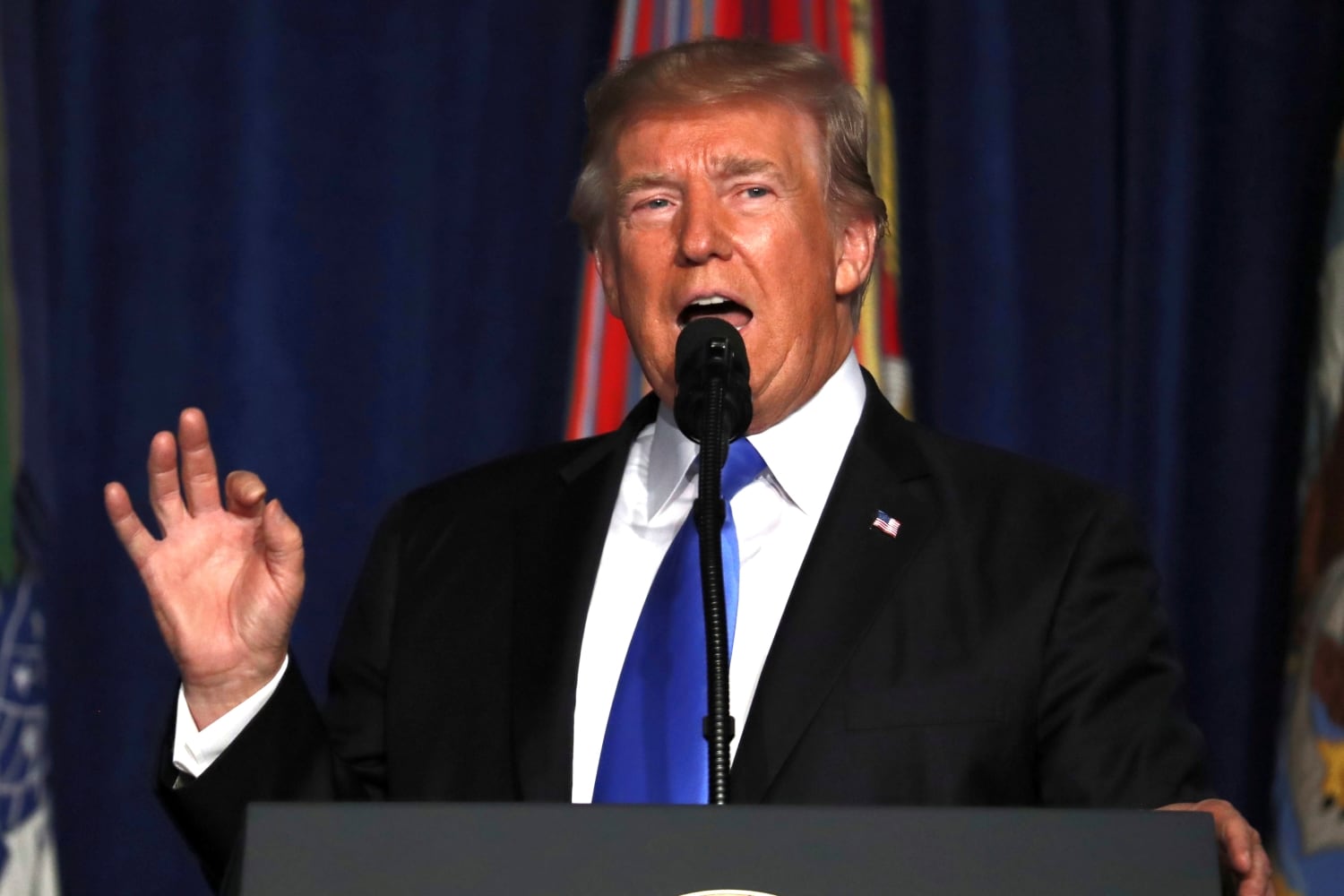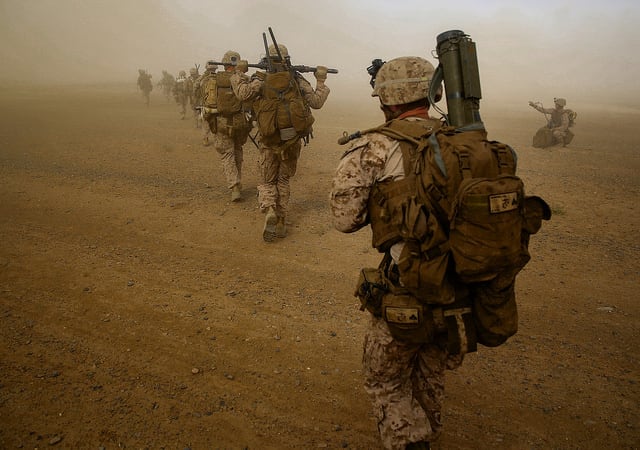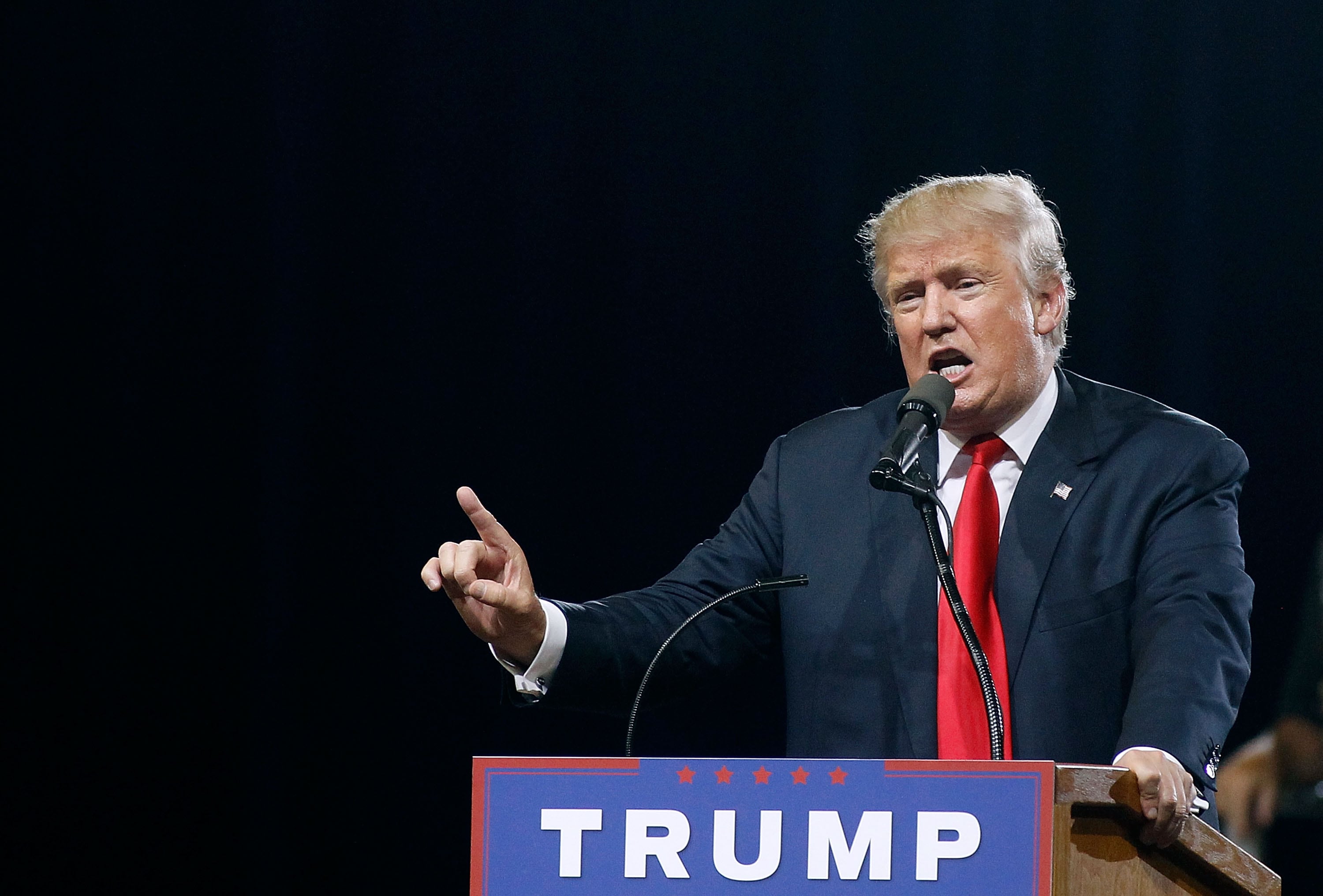WASHINGTON — President Donald Trump announced a new plan for Afghanistan Monday night with calls for additional U.S. forces, greater NATO participation and regional pressure that held echoes of the previous administrations even as the president said his way forward would be a much more aggressive plan that delivers results.
“Nearly 16 years after the Sept. 11 attacks, the American people are weary of war without victory,” Trump told a largely military audience at Joint Base Myer-Henderson Hall in Virginia.
Trump said he was initially inclined to withdraw all forces. As he said on the campaign trail, he still feels that the U.S. had spent too much time, energy and money trying to rebuild Afghanistan, like Iraq, to resemble American governance.
“My original instinct was to pull out, and historically, I like following my instincts,” Trump said. “But all my life I’ve heard that decisions are much different when you sit behind the desk in the Oval Office.”
After repeat consultation with his military advisers, however, including Defense Secretary Jim Mattis and Chairman of the Joint Chiefs Gen. Joseph Dunford, Trump said he relented and determined that a withdrawal from Afghanistan would be a grave mistake.
“Our nation must seek an honorable and enduring outcome,” worthy of the 2,300 U.S. lives lost there fighting in the last 16 years, he said. ”The consequences of a rapid exit are both predictable and unacceptable.”
Trump said there are key differences between his plan and those of the last 16 years, even as it contained echoes of strategy from the Obama era.
First, there would be no time-based strategies but a condition-based approach to determine when U.S. forces would withdraw.
“We will not talk about numbers of troops or our plans for further military action,” Trump said. “I will not say when we are going to attack. But attack we will.”
Keeping in line with that thinking, Trump did not state how many troops will be heading to Afghanistan. News reports throughout Monday indicated the Pentagon is looking at sending around 4,000 troops to America’s longest war.

Second, the president said the U.S. would not be committing its military resources to reconstruction or rebuilding Afghanistan’s governance.“We are not nation building again. we are killing terrorists,” Trump said.
Part of that will continue a trend of taking restrictions off the military fighting on the ground, although as with the troop numbers, Trump provided no details on how he would ”lift restrictions and expand authorities” for warfighters.
”We will also expand authorities for American armed forces to target the terrorists and criminal networks that sow violence and chaos throughout Afghanistan,” he said.
He also indicated that America’s resolve to the Afghan government will remain strong, as long as Kabul is doing its part.
“Our commitment is not unlimited and our support is not a blank check,” Trump said. “The government of Afghanistan must carry their share of the military, political and economic burden.”
Ironically, that statement echoes a key takeaway from President Barack Obama’s first major Afghanistan speech in December 2009 — that “the days of providing a blank check are over” for Afghanistan.
Partner focus
The revised strategy, like the previous one, pursues a regional approach by calling for Pakistan to shore up its border with Afghanistan and confront terror groups such as the Islamic State and Haqqani network.
In June, Mattis declared that the Afghanistan review would not focus just on that country, but instead be part of a ”regional” approach, in a phrasing that seemed to encompass how the U.S. would handle Pakistan.
Pakistan, Trump said, often provides “safe haven to agents of chaos, violence and terror,” later adding that ”We have been paying Pakistan billions and billions of dollars at the same time they are housing the very terrorists that we are fighting. But that will have to change, and that will change immediately.”
The Trump administration has already made some changes in how it deals with Afghanistan’s neighbor, having cut military aid in its planned fiscal 2018 budget. It could take further steps, including listing the country as a state sponsor of terrorism or pushing NATO to remove Pakistan’s listing as a partner nation.
Obama also called for regional engagement but that ultimately failed because of the arbitrary withdrawal deadlines Obama had set, said Steven Bucci, a visiting national security fellow at the Heritage Foundation.
“Doing it the other way [announcing a date of withdrawal] was silly,” Bucci said. ”It plays well to a domestic audience but doesn’t do well on the battlefield to say how many people are going to show up and how long they are going to be there.”
Bucci said continuing engagement with Pakistan now “has more opportunity for success because in that part of the world, when you show strength and resolve, other people tend to get in line with you. If you waver, they scatter.”
Trump’s revised strategy also relies on NATO partners to continue to provide forces for Afghanistan operations, even though NATO has not met the troop requirements of the current plan.
Of the 15,000 forces Resolute Support currently requires to execute the train-and-equip mission, NATO has filled 13,600 slots, as of the latest figures available in May 2017. The U.S. provides the lion’s share of those forces, 6,900.

A long process
Coming to this decision was, according to multiple reports, a long and arduous process for Trump and his national security team.
Increasing the number of troops in Afghanistan was supported for several months by a group headlined by Mattis and national security adviser Lt. Gen. H.R. McMaster. Opposing the move was a group of Trump staffers led by the recently departed Steve Bannon, who had supported a bid by Frontier Services Group chairman Erik Prince to replace U.S. forces with an army of contractors.
There are already 23,525 contractors in Afghanistan supporting U.S. forces — about 9,500 of those contractors are American and the rest are foreign nationals, according to a July 2017 quarterly report released by U.S. Central Command.
The Defense Department reports there are 8,400 U.S. troops serving in Afghanistan, but that figure does not take into account forces there on a temporary-duty assignment of 120 days or less.
The Congressional Research Service has estimated the total cost of military options in Afghanistan since 2001 is more than $840 billion.
For months, Mattis has said the White House was very close to selecting one of the options the Pentagon had developed. But as late as last week, the defense secretary said a full range of possibilities — from withdrawal, to the use of contracted forces, to adding about 4,000 additional troops — was on the table.
RELATED

“The process was rigorous and it involved all members of the Cabinet — of the national security staff, I would say, writ large,” Mattis said Sunday. “I’m very comfortable that the strategic process was sufficiently rigorous and did not go in with a preset condition in terms of what questions could be asked or what decisions would be made.”
Shawn Brimley, a top National Security Council staffer and special adviser to the undersecretary of defense for policy during the first Obama administration, remains skeptical that a surge of several thousand troops will really make much of a difference in Afghanistan.
“Unless President Trump articulates significant changes to the current strategy in Afghanistan and the ways we employ troops, it’s hard to see how adding about a brigade’s worth of additional forces will make a meaningful difference on the ground,” said Brimley, now executive vice president with the Center for a New American Strategy think tank.
“Unfortunately, there is little that is ultimately in America’s power to achieve in Afghanistan. The Taliban have achieved momentum and control many areas of Afghanistan. The Afghanistan government remains corrupt and rife with internecine strife. And Afghanistan’s neighbors have very different national interests than the United States and the international coalition,” Brimley continued.
“The best that we can likely achieve is a well-coordinated counterterrorism approach that prevents Afghanistan’s use as a sanctuary for international terrorism,” he added. “That can likely be achieved with the kind of forces deployed today.”
Mineral wealth
Trump himself has, for years, publicly questioned why the U.S. should remain in Afghanistan.
In a series of November 2013 tweets, he proclaimed ”We have wasted an enormous amount of blood and treasure in Afghanistan. Their government has zero appreciation. Let's get out!” and ”Do not allow our very stupid leaders to sign a deal that keeps us in Afghanistan through 2024-with all costs by U.S.A. MAKE AMERICA GREAT!”
And in March 2013, he tweeted: ”We should leave Afghanistan immediately. No more wasted lives. If we have to go back in, we go in hard & quick. Rebuild the US first.”
So what changed Trump’s mind? One particular issue that has come to light is the question of mineral resources in Afghanistan and how those could benefit U.S. jobs.
Foreign Policy magazine recently reported that Trump met in July with Michael Silver, the CEO of American Elements, a company specializing in advanced metals. According to FP and the New York Times, Silver’s push on Afghanistan’s natural wealth of iron, copper and rare-earth metals intrigued the president, who would like to find ways to offset the cost of U.S. forces used abroad.
Although not elucidated directly in the speech, echoes of that idea could be heard in Trump’s push for Afghanistan to shoulder more of the financial costs for the conflict.
However, getting those resources would likely prove a legal and logistical challenge, said Rebecca Zimmerman, a Policy Researcher at the RAND Corporation who has studied Afghanistan’s industrial growth.
Legally, the Afghan government has largely asked for royalties in the past from groups seeking to mine their resources, rather than in-kind benefits such as training of workers, Zimmerman said. So that would naturally eat into any profits the U.S. would gain from mining there, and could disincentivize American companies from putting forth the capital needed to do that work.
Logistically, Zimmerman notes, such resources have historically been very difficult to get out of the ground.
”Beyond the active conflict happening around the sites and on the road, there is corruption and illegal mining,” she noted, adding that illegal mining is a major industry in Afghanistan.
“So exploiting that mineral wealth will be far harder than it looks,” Zimmerman continued. ”Plus, as more mines were opened, unless better transparency measures were in place, the rate of corruption and illicit activity would increase, contributing significantly to the conflict and the country's governance failures.”
Aaron Mehta was deputy editor and senior Pentagon correspondent for Defense News, covering policy, strategy and acquisition at the highest levels of the Defense Department and its international partners.
Tara Copp is a Pentagon correspondent for the Associated Press. She was previously Pentagon bureau chief for Sightline Media Group.





